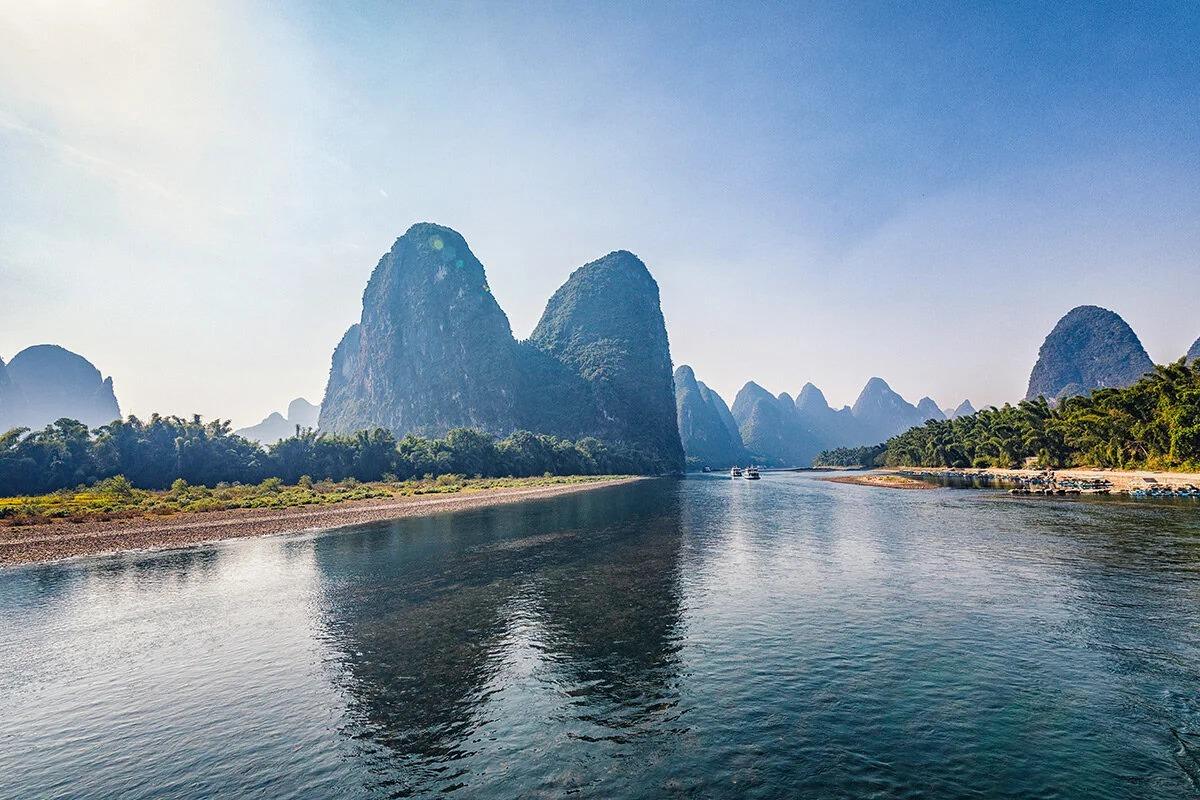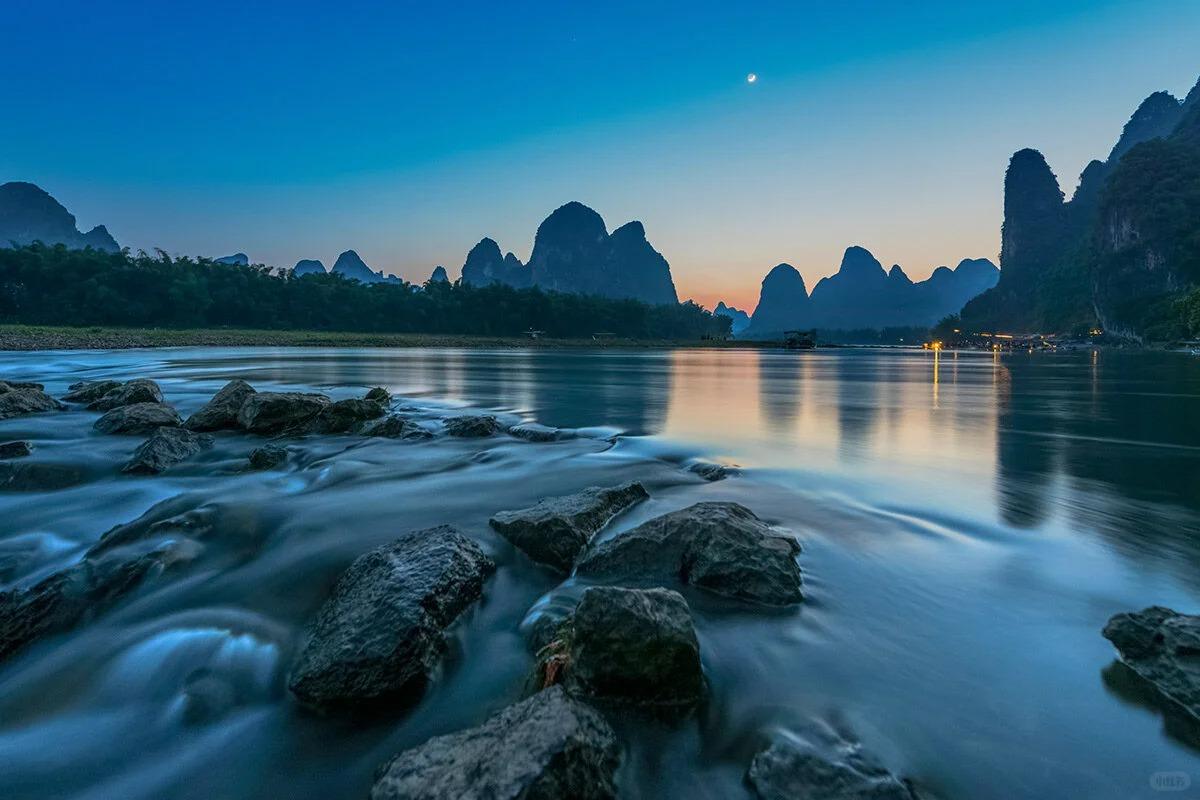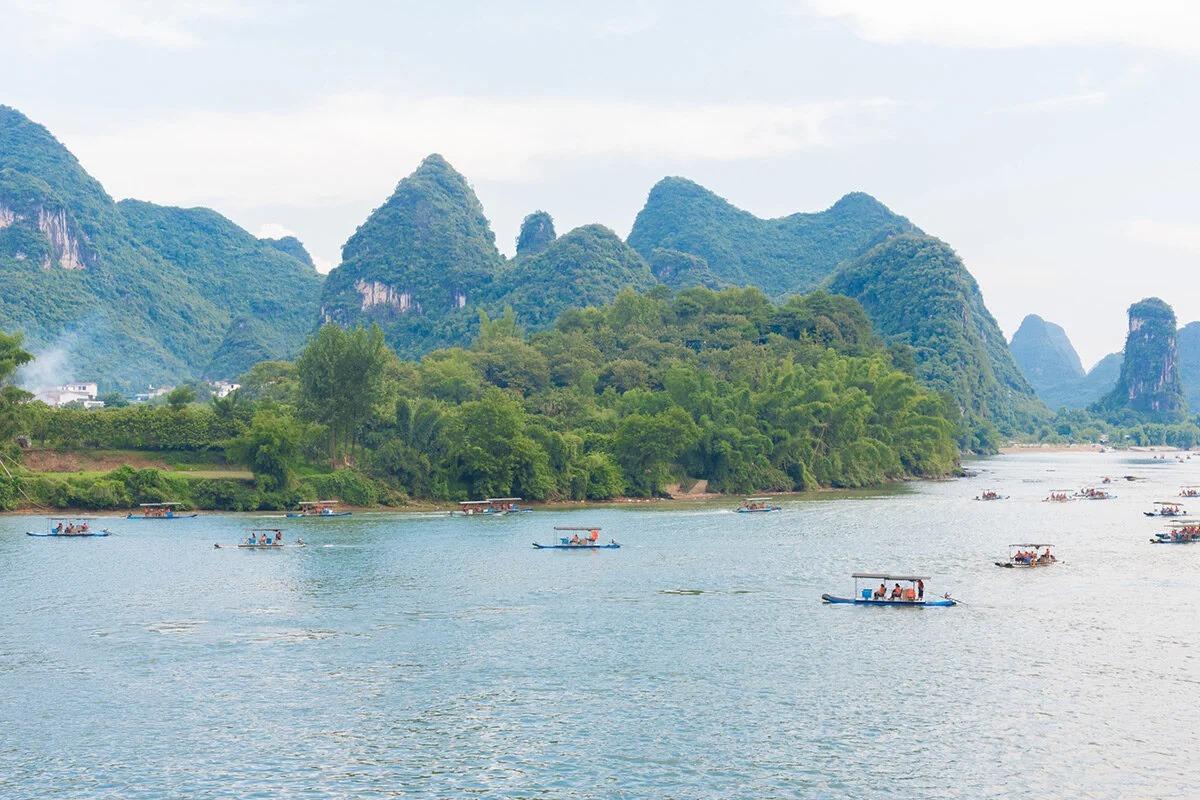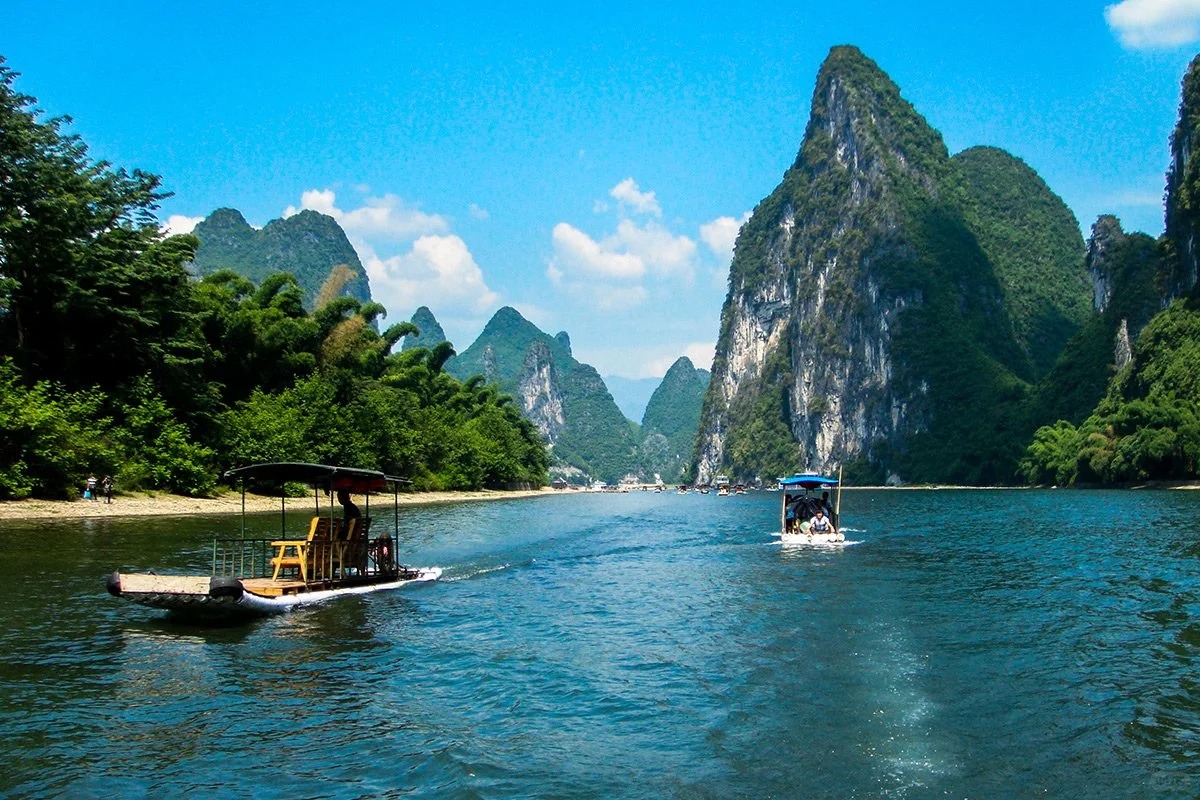Introduction to the Li River
Winding through the heart of Guangxi Province, the Li River (漓江) stands as one of China’s most celebrated natural wonders. This iconic waterway, stretching from Guilin to Yangshuo, has captivated travelers and artists for centuries with its breathtaking beauty.
Renowned for its dramatic limestone karst landscape, the Li River is often described as a masterpiece of nature. Its fame extends far beyond China’s borders, with its image gracing the 20 yuan banknote and countless travel brochures, embodying the essence of China’s picturesque southern scenery.

Geographical Features and Landscape
The Li River meanders approximately 83 kilometers (52 miles) from Guilin to Yangshuo, carving its way through a landscape that seems plucked from a traditional Chinese painting. Towering karst peaks, their limestone facades sculpted by millennia of erosion, create a stunning backdrop that changes with every bend of the river.
| Feature | Description |
|---|---|
| Length | 83 km (52 miles) |
| Start | Guilin |
| End | Yangshuo |
| Notable Formations | Nine Horse Fresco Hill, Elephant Trunk Hill |
One of the most famous sights along the river is the Nine Horse Fresco Hill, where observers can try to spot nine horses hidden in the rock face. Unlike the wide, bustling Yangtze or the historically significant Yellow River, the Li River offers a more intimate and serene experience, showcasing nature’s artistry at its finest.
Historical and Cultural Significance
The Li River basin has been home to human settlements for thousands of years. Archaeological sites along its banks reveal a rich history dating back to the Paleolithic era. Over time, the river has deeply influenced Chinese culture, inspiring countless poems, paintings, and legends.
Traditional cormorant fishing, once a common sight on the Li River, now serves more as a cultural demonstration for tourists. This ancient technique, where fishermen use trained cormorants to catch fish, exemplifies the harmonious relationship between humans and nature in Chinese culture.
The river region is also home to several ethnic minorities, including the Zhuang and Yao peoples, whose unique customs and traditions add to the area’s cultural richness.

Li River Cruise Experience
A cruise along the Li River is the quintessential way to experience its beauty. Options range from large tourist boats to intimate bamboo rafts, each offering a different perspective on the landscape.
Highlights of a typical Guilin to Yangshuo cruise include:
- Passing through the “Painted Hills of Guilin”
- Viewing the karst peaks reflected in the clear waters
- Observing rural life along the riverbanks
The best photo opportunities often come early in the morning when mist shrouds the peaks, creating an ethereal atmosphere. Seasonal variations affect the cruising experience, with summer offering lush greenery and winter providing clearer skies but lower water levels.

Activities and Attractions Beyond Cruising
While the river cruise is the main draw, the surrounding area offers numerous activities for adventurous travelers:
- Hiking the Longsheng Rice Terraces for panoramic views
- Cycling through picturesque countryside around Yangshuo
- Rock climbing on the karst peaks, suitable for various skill levels
- Attending the “Impression Sanjie Liu” show, a spectacular outdoor performance set against the backdrop of the Li River
Visiting charming riverside towns like Xingping allows travelers to experience local life and perhaps catch a glimpse of the scene depicted on the 20 yuan note.

Environmental Conservation and Challenges
The popularity of the Li River poses significant environmental challenges. Conservation efforts focus on:
- Improving water quality through stricter regulations on nearby industries
- Limiting the number of boats to reduce pollution and erosion
- Promoting sustainable tourism practices
Climate change impacts, such as altered rainfall patterns, present ongoing challenges for river management and ecosystem preservation. Balancing tourism development with environmental protection remains a key concern for local authorities.

Practical Information for Travelers
To experience the Li River:
- Fly into Guilin Liangjiang International Airport
- Book a river cruise in advance, especially during peak seasons
- Consider staying in both Guilin and Yangshuo for a comprehensive experience
The best times to visit are April to October when the weather is pleasant and water levels are optimal. However, be prepared for crowds during Chinese national holidays.
| Season | Pros | Cons |
|---|---|---|
| Spring (Apr-May) | Comfortable weather, lush scenery | Occasional rain |
| Summer (Jun-Aug) | Vibrant landscapes, good water levels | Hot, humid, crowded |
| Autumn (Sep-Oct) | Clear skies, ideal for photography | Still relatively crowded |
| Winter (Nov-Mar) | Fewer tourists, misty scenery | Cooler temperatures, lower water levels |
For accommodation, Guilin offers modern hotels while Yangshuo provides a mix of international chains and charming guesthouses. Don’t miss trying local specialties like Guilin rice noodles and beer fish, a Li River delicacy.
A journey along the Li River is more than just a scenic tour; it’s an immersion into a landscape that has inspired artists and poets for millennia. As you glide through the mist-shrouded peaks and witness the interplay of light and shadow on the karst mountains, you’ll understand why this river holds such a special place in Chinese culture and natural heritage. Whether you’re seeking inspiration, adventure, or simply a moment of tranquility amidst breathtaking beauty, the Li River offers an unforgettable experience that will linger in your memory long after you’ve returned home.






